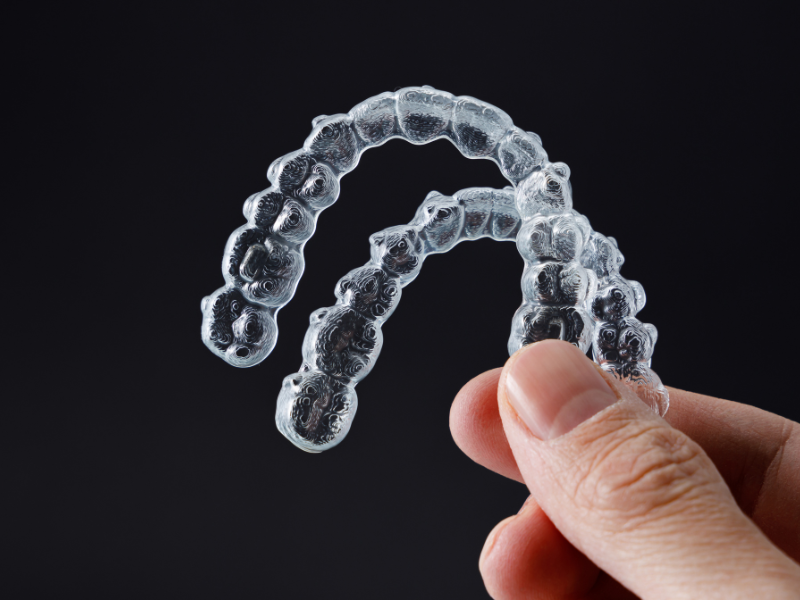How Often Should I Clean My Retainer?
The sparkling new smile that you got from your braces or aligners took time and dedication.
But the work doesn't stop once they come off. Regular cleaning keeps retainers fresh, preventing bacteria buildup that threatens oral health.
Luckily, Movemints make retainer hygiene easy!
These innovative Xylitol Mints are designed to fit around clear plastic retainers (like Invisalign) and are used to seat them correctly in your mouth. Movemints are made with xylitol, which stops cavity-causing bacteria and prevents plaque buildup while freshening breath.
In this article, we'll look at why good retainer hygiene will help preserve your perfect smile. With simple habits like using Movemints and performing regular cleanings, you can avoid stains, odors, and damage.
Why Regular Retainer Cleaning is Important

Cleaning your retainer regularly is essential for oral health and retainer integrity.
Plaque build-up creates risks with orthodontic retainers. This is because the bacteria it harbors can accumulate on the retainer and cause discoloration and odor. It can also damage the retainer material.
These germs can also spread to your mouth, increasing your risk of dental issues. Daily cleaning maximizes your retainer's longevity and is good for your health!
How to Clean Your Retainer at Home

Cleaning retainers daily is easy and you only need some common household items.
You'll need a soft toothbrush and mild dish soap. Avoid using toothpaste as this can scratch or cloud the retainer over time. Some people prefer soaking their retainers in a denture/retainer cleaner solution.
Cleaning Option 1: Toothbrush and Dish Soap
Cleaning your retainer with a toothbrush and dish soap is a simple and effective method recommended by orthodontists.
The dish soap has degreasing properties that help eliminate the residue that builds up on retainers, including plaque, bacteria, and other organic matter.
It's best to do this using a soft-bristled toothbrush. Gently scrub away the debris on all surfaces of the retainer. Pay attention to crevices and rinse thoroughly with cool or lukewarm water when you are finished.
Cleaning Option 2: The Soaking Method
You can also soak retainers in a cleaning solution specifically designed for dental appliances.
These products usually contain hydrogen peroxide to kill bacteria. They may also have sodium bicarbonate, which has a cleansing action that lifts debris from the retainer surface.
After soaking for the time specified on the package (typically up to 20 minutes), lightly scrub the retainer with a soft brush before rinsing. Soaking allows cleaners to penetrate and disinfect tiny crevices in the retainer.
Your Solution to On-the-Go Retainer Cleaning
It's not always convenient to clean your retainer when you're out and about.
Here is a quick cleaning option for freshening retainers when you're away from home.
SmileSaver Spray

SmileSaver Spray is a portable cleaner from Movemints that is sugar, alcohol, and peroxide-free.
SmileSaver Spray eliminates 99.9% of odor-causing bacteria in just 60 seconds.
Simply spray your retainer, let it sit briefly, and pop it back in your mouth without rinsing. It works with all removable oral devices, including clear aligners, sleep apnea components, and even your toothbrush! Its small size makes it easy to keep in a purse or pocket for cleaning after meals.
Retainer Cleaning FAQ
How often should I clean my retainer?
Experts recommend cleaning your retainer at least once daily. However, cleaning after each time you eat is even better. You'll also want to give your retainer a thorough cleaning at the end of each day before bed. Consistent, frequent cleaning is the best way to keep your retainer in good shape and prevent bad breath. SmileSaver Spray is a convenient way to manage frequent cleaning.
What products should I avoid when cleaning my retainer?
Certain household cleaners and oral hygiene products can actually harm your retainer, so it's important to avoid them. Steer clear of toothpaste, hot water, mouthwash, bleach, rubbing alcohol, and undiluted vinegar or hydrogen peroxide when cleaning your retainer. The abrasives in toothpaste can scratch the surface, while the others can discolor or weaken the material over time.
Can I eat with my retainer on?
It's best to avoid eating or drinking anything besides water while wearing your retainer. Food particles easily get trapped under and around the edges of the retainer, leading to bacterial growth, and promoting tooth decay. Take your retainer out for meals and wait until you can brush your teeth before putting it back in, or carry SmileSaver Spray to clean your retainer before putting it back in.



